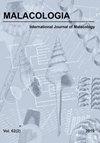三种除草剂对曼氏血吸虫中间寄主亚历山大生物phalaria alexandrina生物学和组织学的影响
IF 0.7
4区 生物学
Q4 ZOOLOGY
引用次数: 25
摘要
血吸虫病仍然是发展中国家的一个公共卫生问题。亚历山大生物phalaria alexandrina是曼氏血吸虫的中间宿主,在埃及广泛分布。在埃及,杀螺剂很重要,但除此之外,杀螺剂的意义不大。然而,现在它们可能变得重要,因为世卫组织谈论在一些国家消灭血吸虫病,并且世卫组织最终接受了控制蜗牛的重要性。本研究考察了Butralin(作为Amex 48% EC)、草甘膦异丙铵(Herphosate 48% SL)和戊二甲基灵(Stomp 50% EC) 3种商用除草剂对亚历山大白蝇的不同效果。所有这三种化合物都被发现具有杀螺作用,在所检测的浓度范围内,戊二甲基灵的毒性最大。此外,在亚致死浓度下,这些化合物降低了暴露的亚历山大绿僵菌的生长速度和繁殖产量(产卵数量),并降低了这些卵的生存能力。在一定浓度下,蜗牛的消化腺和雌雄同体腺的组织学变化支持了分析数据的解释。此外,这三种化合物也被证明能迅速(暴露3小时)诱导曼氏血吸虫的毛蚴和尾蚴的毒性作用。结果表明,这三种除草剂均具有杀虫和除虫的作用。本文章由计算机程序翻译,如有差异,请以英文原文为准。
The Impact of Three Herbicides on Biological and Histological Aspects of Biomphalaria alexandrina, Intermediate Host of Schistosoma mansoni
ABSTRACT Schistosomiasis remains a public health problem in the developing world. Biomphalaria alexandrina is the intermediate host of Schistosoma mansoni, with a widespread distribution in Egypt. In Egypt molluscicides have been important, but otherwise molluscicides have been of minor significance. They may, however, become important now that WHO talks about eradicating schistosomiasis in some countries and that WHO has finally accepted that snail control is important.The present study investigated the different effects of three commercial herbicidical compounds, Butralin (as Amex 48% EC), glyphosate isopropylammonium (Herphosate 48% SL) and Pendimethalin (Stomp 50% EC) on B. alexandrina. All three compounds were found to have a molluscicidal effect, with Pendimethalin the most toxic over the examined range of concentrations. In addition, at sublethal concentrations, these compounds reduced growth rates and reproductive output (numbers of eggs laid) in exposed B. alexandrina, and it reduced viability of those eggs. Interpretion of assay data was supported by histological changes in the digestive and hermaphrodite glands of snails exposed at a range of concentrations. Moreover, the three compounds were also shown to rapidly (with three hours exposure) induce a toxic effect in miracidiae and cercariae of Schistosoma mansoni. It can be concluded that the three herbicidical compounds have molluscicidal and antihelminth properties.
求助全文
通过发布文献求助,成功后即可免费获取论文全文。
去求助
来源期刊

Malacologia
生物-动物学
CiteScore
2.00
自引率
0.00%
发文量
15
审稿时长
3 months
期刊介绍:
Malacologia publishes papers on all groups of the Mollusca. Malacologia specializes in publishing long papers and monographic treatments. Complete data are especially appreciated. Papers must be of interest to an international readership. Papers in systematics, ecology, population ecology, genetics, molecular genetics, evolution and phylogenetic treatments are especially welcomed. Also welcomed are letters to the editor involving papers published or issues of import to science of the day.
 求助内容:
求助内容: 应助结果提醒方式:
应助结果提醒方式:


